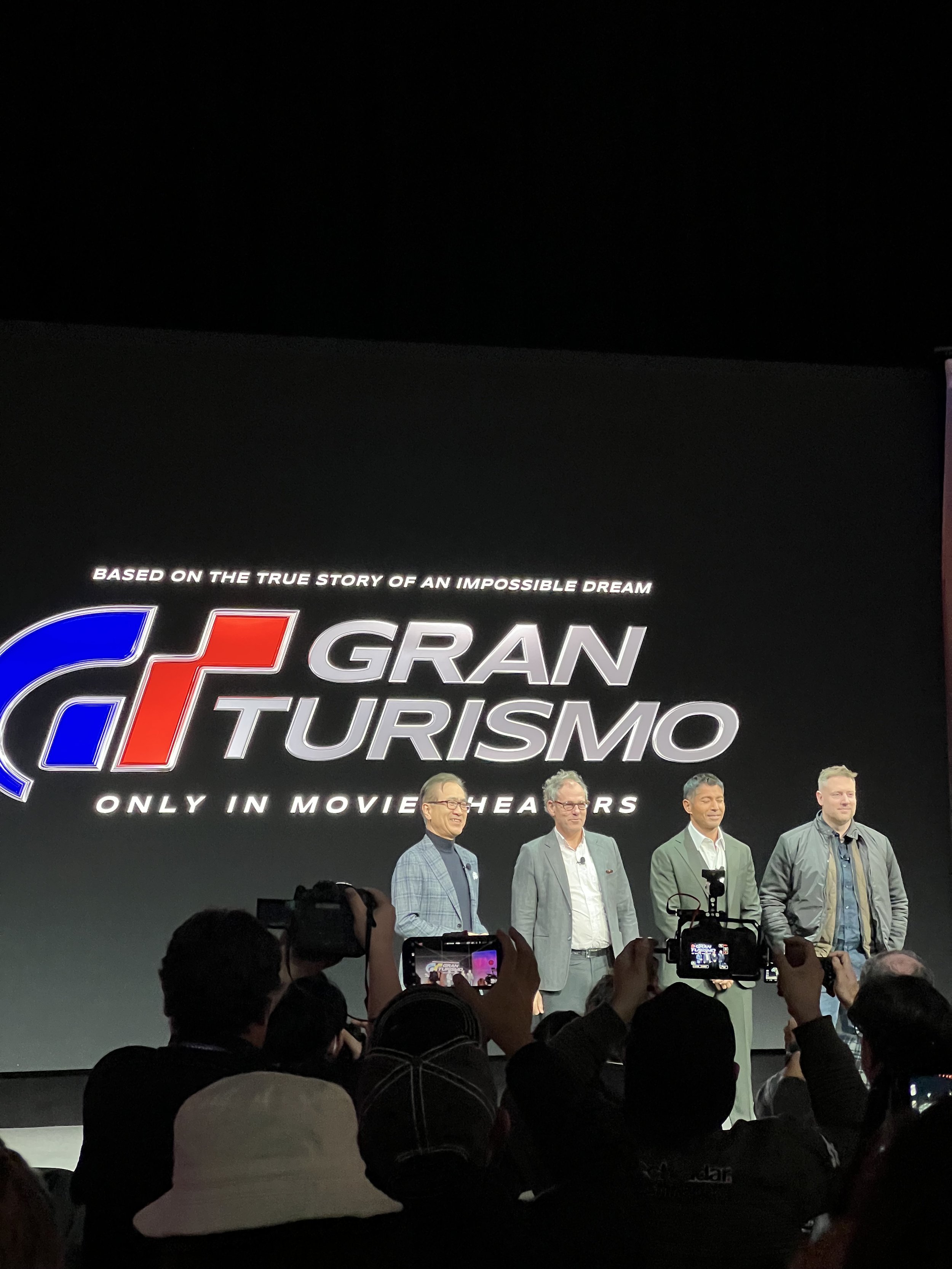Immersive Experiences and Sustainable Solutions: A Recap of CES 2023 Part 1
As we bid farewell to 2022, a year marked by the emergence of the Metaverse, the frenzy surrounding NFTs, the rise of AI art, and the exceptional capabilities of ChatGPT, the dawn of 2023 heralds the comeback of a tech event that has the potential to reshape the world once again - arguably, the most significant one yet.
After two years of a watered down online experience, the Consumer Electronics Show, or CES, is back at full strength. CES is an annual event that showcases the latest and greatest technology innovations from around the world. It's a hub for innovators, entrepreneurs, and tech enthusiasts to gather and experience the future of technology firsthand. The show is where one can see the most exciting advancements in the tech industry. With thousands of companies showcasing their latest products, CES is the ultimate playground for tech lovers, media, and investors, giving them a glimpse into the future of the digital world. CES is the place to be to stay ahead of the game and discover the latest and greatest technology trends, and I found myself right in the middle of it.
My first in-person experience covering CES as media started off with media day. I, along with other content creators, media, and exhibitors had exclusive all-access to presentations and product launches of some of the biggest leading tech companies. Canon, Sony, BMW, Samsung, Huawei, and many more filled up the day with back to back and overlapping time slots. My day started off with Canon and its push into software driven solutions.
At the show, the 85-year-old company focused on software applications, showing off a direction it had been hinting at before, but this time relying far less on its own hardware and more on the software the company had developed, in part as a response to the COVID-19 pandemic casting a shadow over people’s ability to connect. Canon created ground-breaking solutions that help people connect in more ways than they ever could have imagined, redefining how they work and live at a time when many of them are embracing a hybrid lifestyle. According to Kazuto Ogawa, president and CEO, Canon U.S.A., Inc, in a press briefing at CES 2023, Canon’s ultimate role is to bring people closer together by revealing endless opportunities for creators. Under the theme of ‘Limitless Is More,’ Canon showed CES 2023 attendees what it was creating as a company focused on innovation and a world without limits.
Among other things, Canon showed off a couple of somewhat gimmicky immersive experiences. The first one was tied in with M. Night Shyamalan’s upcoming thriller movie, “Knock at the Cabin.” At the heart of things, however, Canon was tapping into a base desire in humanity: to feel connected to one another. The company was desperate to show off how its solutions could “remove the limits humanity faces to create more meaningful communication,” through four technologies it was showing off at the trade show that year.
The second gimmicky immersive experience is already actually in use today. With the Cleveland Cavaliers and the NBA, Canon premiered a virtual reality version of Canon Free Viewpoint C-View at the CES conference in Las Vegas. Canon Free Viewpoint utilizes 100 4K cameras to capture on-court player movements and convert them into 3D volumetric video. The Cavaliers and the Nets are the only NBA teams currently using Canon Free Viewpoint, which has already been used to create video game-like live broadcasts and replays during games. With Canon’s system, fans can experience a new level of interactivity by having fly-through operators that allow fans to vote on angles and control their own viewing experiences. Canon Free Viewpoint Video System was first announced in 2017 and was piloted at the 2019 World Rugby Cup, and now boasts reduced data latency and VR headset compatibility.
The flagship solution Canon was showing off was Kokomo, which the company described as a first-of-its-kind immersive VR software package. It was designed to combine VR with an immersive calling experience. Using a VR headset and a smartphone, the Kokomo software enabled users to see and hear one another in real time with their live appearance and expression in a photo-real environment. In effect, the software package scanned your face to learn what you looked like, then turned you into a photo-realistic avatar. The person you were in a call with could see you — sans VR headset — showing your physical appearance and facial expressions. The effect was to experience a 3D video call. At the show, Canon demoed the tech by letting visitors step into a 1×1 conversation with the “Knock at the Cabin” characters.
With barely enough time for a breather, the “HD Hyundai” presentation was next on the agenda. In their keynote, HD Hyundai, formerly known as Hyundai Heavy Industries, pledged to lead the "ocean transformation" movement to build a sustainable future. The company aims to use world-leading shipbuilding technology to establish a safe transport value chain, turning the ocean into a place of sustainable and eco-friendly energy. The four core pillars of the company's maritime transformation goals include Ocean Mobility, Ocean Wise, Ocean Life, and Ocean Energy. HD Hyundai plans to focus on advancing the technology of offshore windfarms, small modular nuclear reactors, and solid oxide fuel cells. With the ocean's potential for autonomous sailing and digital solutions, the company sees endless opportunities. Their whole presentation presented an ideal situation where tech
HD Hyundai's announcement of its plans to lead an "ocean transformation" for a sustainable future is certainly an ambitious and exciting vision. However, it is important to note that many of the things presented by HD Hyundai were renderings and concepts, rather than fully developed and operational technologies. Time will tell whether the company's vision for an ocean transformation will be realized.
What followed was the Samsung presentation. The anticipation was palpable as the hall quickly reached maximum capacity, with media personnel spilling over into a smaller room where a video feed of the stage was provided. As fate would have it, this unexpected shift to a secondary venue felt like a virtual experience of CES, rather fitting as it aligned perfectly with Samsung's focus on smart home and IoT technology.
Samsung shared its vision for a more calming and energy-efficient connected device experience, which includes the first market mass market smart home energy management system to earn the Energy Star certification. Samsung also announced a new wash cycle called Less Microfiber that can reduce microplastic pollution during the laundry cycle by 54%, which is already available for bespoke washers in Europe and will be expanding availability to Korea and the US soon.
Samsung is pivoting to focus more on the connected experience, with the introduction of its latest SmartThings Hub, the SmartThings Station, which is equipped with a button that can be used to program smart lights, air conditioner, or even smart blinds, and make a routine that works for you. Additionally, Samsung is working closely with other partner brands, such as Philips Hue, to create a better connected ecosystem where compatible appliances, Google Nest Hub, Amazon video ring doorbell, and Philips Hue lights will work in unison to make your digital home more seamless. What's significant about this product is that it's the first Samsung product to have Matter support built-in.
Matter is a new open-source smart home standard created by the Connectivity Standards Alliance (formerly known as the Zigbee Alliance), which allows for smart home devices from different manufacturers to communicate with each other seamlessly. Samsung's commitment to supporting Matter demonstrates their effort to create a more accessible and inclusive smart home experience for all consumers, regardless of the brand of devices they own.
Samsung also announced Knox Matrix, built on Samsung's defense-grade security platform, which turns your smart home into a smart shield for your Samsung devices. When connected to Knox Matrix, you immediately get the benefit of two critical features: credential sync and trust chain. Credential sync helps secure your information by moving data from device to device, and the trust chain enables connected devices to monitor each other for security threats, all managed through a private blockchain.
To avoid missing out, I made my way early to line up for the Sony keynote. Sony was a major sponsor of the event, and they had a massive presence in the form of their large corner booth in the main hall, where the exclusive keynote was held.
During the keynote, Kenichiro Yoshida discussed Sony's corporate direction and focus on getting closer to people, including creators and users. Yoshida highlighted the launch of Sony's first Nano satellite and how Sony's technologies are changing the way we see the world and unlocking the potential of film and television productions. The speaker also mentioned Sony's acquisition of Pixomondo and collaboration with Epic Games for real-time rendering of virtual projection. Yoshida spoke about Sony's exploration of the potential of its best-loved video game IPs, as well as upcoming film adaptations of Gran Turismo, Twisted Metal, and Go to War. Sony aims to make immersive experiences possible, even if the audience is not physically present, and talked about its collaboration with Manchester City to provide fans with a stadium experience. The keynote also featured the launch of PlayStation VRT 2, the next-generation virtual reality platform, and announced the development of Project Leonardo, a PS5 accessibility controller kit for players with disabilities.
Their biggest reveal however, was the Honda x Sony electric car prototype, which will be marketed under a new brand called Afeela. The prototype was unveiled at CES 2023, where the companies also revealed that the car has been developed with three key concepts in mind: autonomy, augmentation, and affinity. The car is equipped with 45 cameras and sensors inside and out to enable level 3 automated driving or level 2+ driver assistance. Additionally, the companies are collaborating with Epic Games to integrate its Unreal Engine and explore new entertainment options via the likes of the metaverse. The car's production is planned to begin in the first half of 2025, with sales starting by the end of that year and the first deliveries in North America in spring 2026.
The car showcases a sleek, minimalist design, with a curvy front end and a "media bar" that enables occupants to interact with other road users and share information. Inside, the car features a large display at the front that stretches across the width of the cabin and a dual-screen entertainment system for rear passengers. However, no specifications have been given for the powertrain, although it is expected to be equipped with an all-wheel drive dual motor setup. The car will be manufactured at Honda's facilities in Ohio.
The opening day of CES 2023 gave a glimpse into the incredible innovations that companies are bringing to the tech industry. With so many groundbreaking products and announcements in just a few hours, it's no wonder that CES is the ultimate playground for tech enthusiasts, media, and investors. This year's CES will undoubtedly reshape the world of technology and redefine the way we live and work. The following blogs will focus on the excitement of the show proper, and I invite you to follow along as I explore the latest and greatest technological advancements in the coming days. The future of tech is looking bright, and I can't wait to share it with you.
















